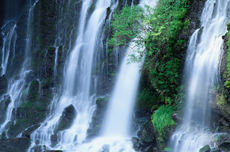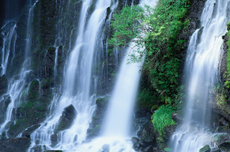 More than two-thirds of the Earth’s surface is covered with liquid water
More than two-thirds of the Earth’s surface is covered with liquid water
If you include ice, the proportion rises to more than four-fifths
Humans and most animals are ~62% water
Soft-bodied aquatic organisms like jellyfish are more than 98% water
Freezing point is 0°C and the boiling point is 100°C
The density of water is 1 kg per liter
A pinhead-sized drop of water contains 1 billion billion molecules
Seawater has about 10.8 parts per thousand (ppt) of sodium and 19.35 ppt of chloride
Freezing point of saltwater at 35ppt is -1.9°C
Of all water on Earth, approximately 3% is fresh
Almost four-fifths of freshwater is contained in the polar regions as glaciers
One-fifth of freshwater lies under the surface as groundwater
0.3% of freshwater is in liquid form on the surface (rivers, lakes, streams, wetlands, etc.)
Natural freshwater contains 25 dissolved minerals (i.e. silica, calcium, potassium, magnesium, iron)
The average mass of floating ice in the Arctic is 16-23 feet thick
The ice covering the Antarctica landmass is more than 2.8 miles thick in some places
Water is most dense at 4°C
Water represents 0.2% of Earth’s weight
9,500 cubic miles of water evaporates from the oceans and falls on land per year

